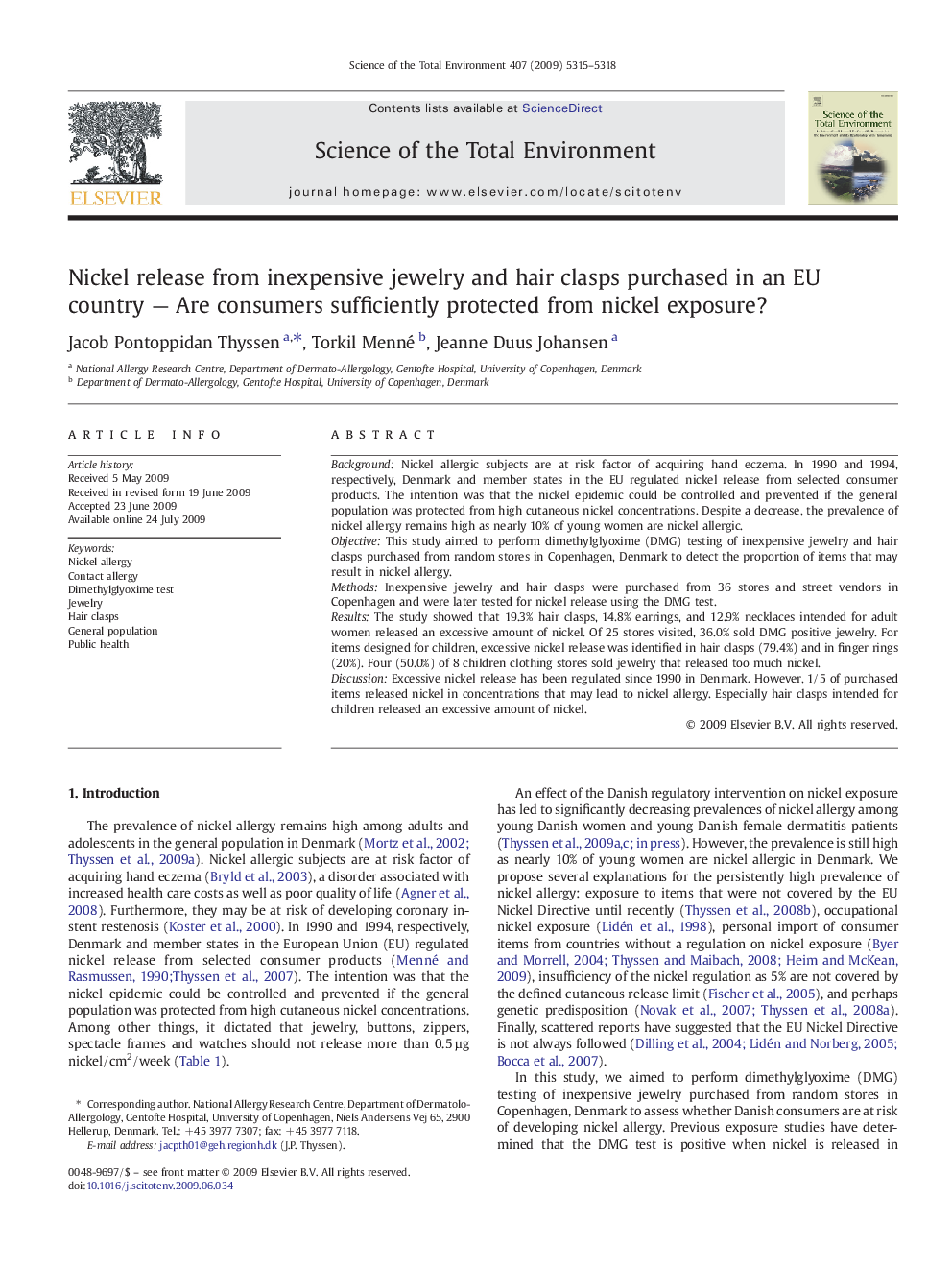| Article ID | Journal | Published Year | Pages | File Type |
|---|---|---|---|---|
| 4431104 | Science of The Total Environment | 2009 | 4 Pages |
BackgroundNickel allergic subjects are at risk factor of acquiring hand eczema. In 1990 and 1994, respectively, Denmark and member states in the EU regulated nickel release from selected consumer products. The intention was that the nickel epidemic could be controlled and prevented if the general population was protected from high cutaneous nickel concentrations. Despite a decrease, the prevalence of nickel allergy remains high as nearly 10% of young women are nickel allergic.ObjectiveThis study aimed to perform dimethylglyoxime (DMG) testing of inexpensive jewelry and hair clasps purchased from random stores in Copenhagen, Denmark to detect the proportion of items that may result in nickel allergy.MethodsInexpensive jewelry and hair clasps were purchased from 36 stores and street vendors in Copenhagen and were later tested for nickel release using the DMG test.ResultsThe study showed that 19.3% hair clasps, 14.8% earrings, and 12.9% necklaces intended for adult women released an excessive amount of nickel. Of 25 stores visited, 36.0% sold DMG positive jewelry. For items designed for children, excessive nickel release was identified in hair clasps (79.4%) and in finger rings (20%). Four (50.0%) of 8 children clothing stores sold jewelry that released too much nickel.DiscussionExcessive nickel release has been regulated since 1990 in Denmark. However, 1/5 of purchased items released nickel in concentrations that may lead to nickel allergy. Especially hair clasps intended for children released an excessive amount of nickel.
